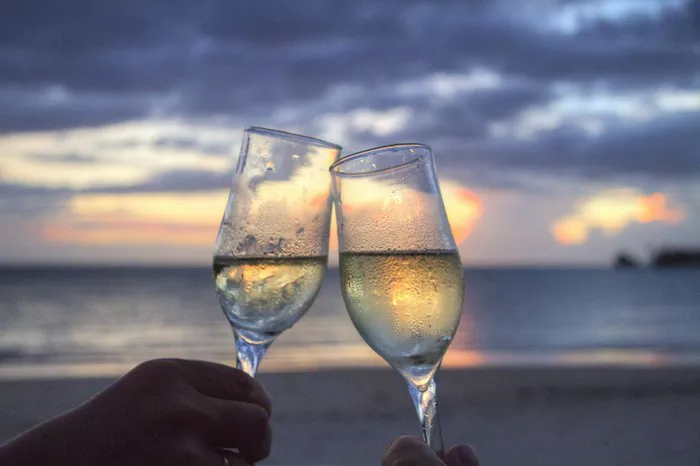The world of alcoholic beverages is diverse and multifaceted, offering a plethora of options to tantalize the taste buds. Amidst the array of libations, the distinction between different types often leads to confusion. One such inquiry that frequently arises is, “Is Champagne a spirit?” To unravel this enigma, it is crucial to delve into the realms of both Champagne and spirits, understanding their production, characteristics, and classifications.
Defining Champagne and Spirits
Champagne, often associated with celebrations and opulence, is a sparkling wine hailing specifically from the Champagne region in France. Its effervescence, finesse, and distinct flavor profile arise from a meticulous winemaking process that involves secondary fermentation in the bottle, creating those iconic bubbles.
On the other hand, spirits encompass a broad category of alcoholic beverages distilled from various agricultural sources, such as grains, fruits, or even sugarcane. Examples of spirits include vodka, whiskey, rum, gin, and tequila. Unlike Champagne, spirits undergo distillation, a process involving heating a fermented liquid to separate alcohol from water, producing a higher alcohol content.
Understanding the Production Process
The process of crafting Champagne involves several intricate steps. It begins with the cultivation of grapes, primarily Chardonnay, Pinot Noir, and Pinot Meunier, specific to the Champagne region. After harvesting, these grapes undergo pressing to extract the juice, which then undergoes primary fermentation to convert sugars into alcohol.
However, what sets Champagne apart is its secondary fermentation process. A blend of base wines, along with yeast and sugar, is added to the bottled wine, triggering a second fermentation that produces carbon dioxide and results in those characteristic bubbles.
Conversely, spirits undergo distillation after the initial fermentation process. The fermented liquid, known as a wash or beer, undergoes heating in a still. As alcohol has a lower boiling point than water, it evaporates and is collected, then condensed back into liquid form, resulting in a higher alcohol content.
Distinguishing Characteristics of Champagne and Spirits
Champagne boasts a unique set of characteristics, including its effervescence, diverse flavor profile, and aging potential. Its bubbles impart a lively sensation on the palate, while the taste can range from crisp and citrusy in younger varieties to complex and nutty in aged Champagnes. Additionally, the aging process in contact with yeast cells during secondary fermentation contributes to its unique aroma and taste.
Contrarily, spirits exhibit a wide spectrum of flavors and aromas influenced by various factors such as raw ingredients, distillation methods, and aging processes. For instance, whiskey derives its flavors from the type of grain used and the cask in which it matures, while gin obtains its taste from botanicals like juniper berries and spices during distillation.
Legal Classifications and Regulations
To comprehend whether Champagne falls under the category of spirits, understanding legal classifications and regulations is imperative. Champagne holds a distinct classification as a wine, governed by stringent regulations laid out by the Comité Champagne, which safeguard its production methods, geographical origin, and labeling practices. These regulations are enforced to maintain the authenticity and quality associated with the term “Champagne.”
Contrarily, spirits fall under a broader category with various sub-classifications based on factors such as raw material, distillation process, and aging. Each type of spirit is often regulated by its own set of rules and standards. For instance, Scotch whisky has stringent regulations set by the Scotch Whisky Association, dictating the specific criteria for its production and labeling.
Cultural Significance and Consumption Patterns
Champagne has secured a revered position in global culture as a symbol of celebration and luxury. Its association with special occasions like weddings, New Year’s Eve, and significant achievements has rendered it a drink of choice for toasting and commemorating milestones. The pop of a Champagne cork often signifies festivity and joyous moments.
In contrast, spirits hold diverse cultural significance across the globe. They are deeply embedded in various traditions, serving as a cornerstone of classic cocktails and beverages enjoyed in social settings. For example, tequila holds cultural importance in Mexico and is celebrated during festivals, while vodka is an integral part of Russian culture and traditions.
The Versatility and Appeal of Champagne and Spirits
Champagne, with its effervescence and versatility, transcends boundaries in its consumption. It can be savored on its own as an aperitif or paired excellently with a myriad of cuisines, enhancing the dining experience. Its adaptability in cocktails like mimosas or French 75s showcases its versatility beyond just a standalone drink.
Spirits, on the other hand, offer a broad spectrum of flavors and drinking experiences. From sipping a fine whiskey neat to enjoying a refreshing gin and tonic or experimenting with mixology to create innovative cocktails, spirits cater to diverse palates and preferences.
Conclusion
In conclusion, Champagne and spirits stand as distinct categories within the world of alcoholic beverages. While Champagne is a sparkling wine renowned for its effervescence and meticulous production methods in the Champagne region of France, spirits encompass a wide array of distilled alcoholic beverages with varying flavors, derived from diverse raw materials and distillation techniques.
The question “Is Champagne a spirit?” finds its answer in the realms of winemaking and distillation. Champagne remains firmly rooted in the wine category due to its fermentation process and unique characteristics, distinct from spirits, which undergo distillation to achieve higher alcohol content and diverse flavor profiles. Understanding the nuances between Champagne and spirits not only enhances appreciation for these libations but also enriches the experience of indulging in their unique qualities.


